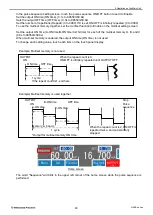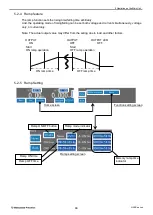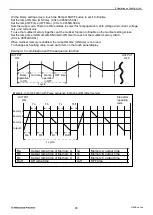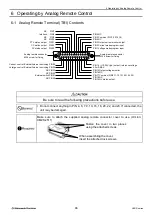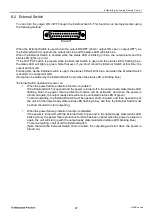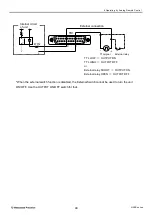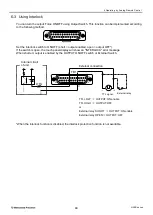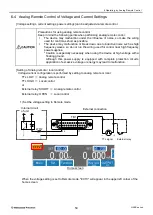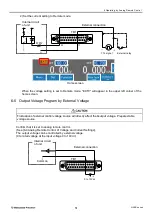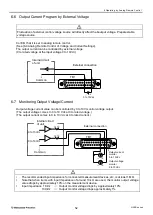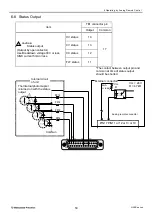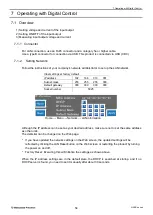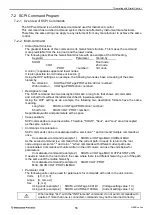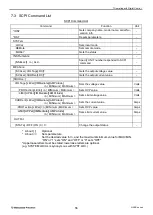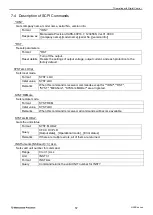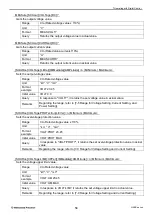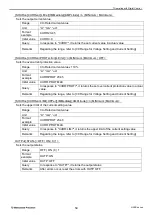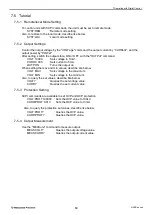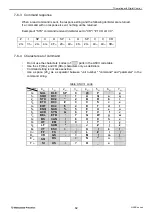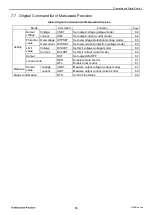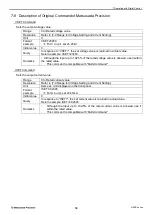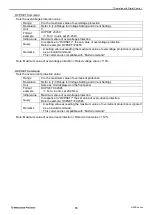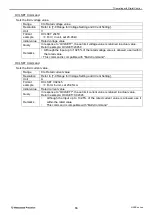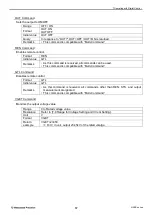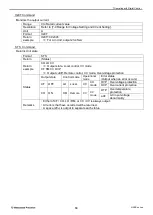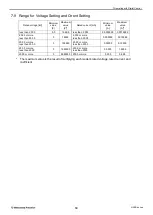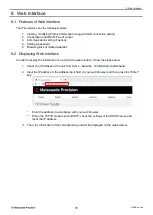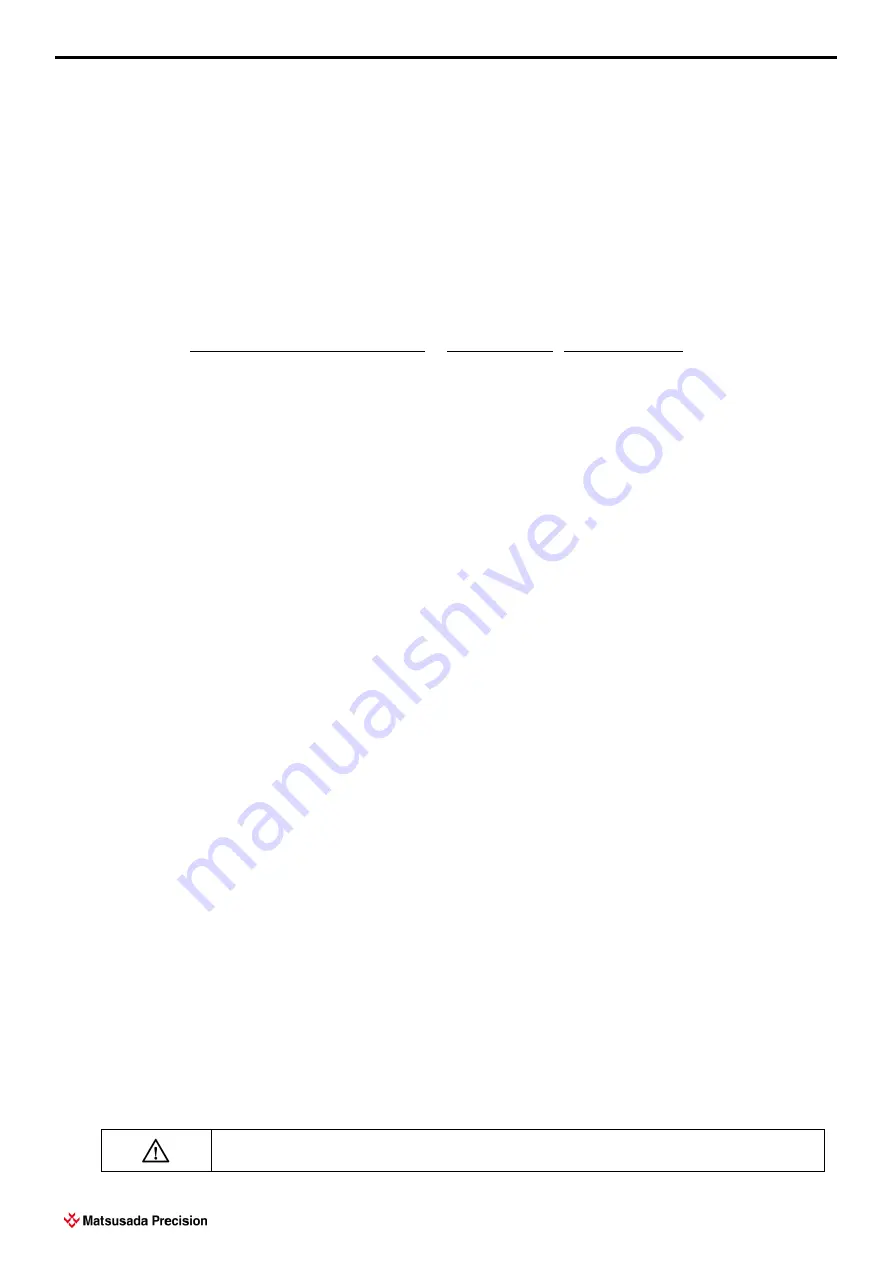
7 Operating with Digital Control
55
HARS series
7-2 SCPI Command Program
7-2-1 Overview of SCPI Commands
The SCPI command is an ASCII-based command used for instrument control.
This command has a unified command system that is not affected by instrument manufacturers.
Therefore, the same string can apply to any instrument from any manufacturer to achieve the same
control.
7-2-2 Multi-command
Hierarchical Structure
The greatest feature of this command is its hierarchical structure. This makes the command
more predictable from the top (root) and the lower nodes.
The following describes the hierarchical structure with an example of the OVP setting.
Keyword
Parameter
Hierarchy
SOUR
Root node
:VOLT
2nd node
:PROT
<number>
3rd node
A colon (:) separates upper and lower nodes.
It is also possible to omit nodes enclosed in [ ].
Using the OVP setting as an example, the following two nodes have a meaning of the same
hierarchy.
No omission
SOURce:VOLTage:PROTection:LEVel <number>
With omission
VOLTage:PROTection <number>
Description format
The SCPI command has two description formats: a long form that shows all commands
and a short form without the letters described in lowercase letters.
Using the OVP setting as an example, the following two description formats have the same
meaning.
Long form:
SOURce:VOLTage:PROTection <number>
Short form:
SOUR:VOLT:PROT <number>
Separate keywords and parameters with a space.
Case sensitivity
SCPI commands are case insensitive. Therefore, "SOUR", "Sour", and "sour" are all accepted
as the same notation.
Commands Concatenation
SCPI commands can be concatenated with a semicolon ";" and can send multiple commands at
once.
Concatenated command (example 1): SOURce:VOLTage MAX;CURRent MAX
As the second command is a command from the current path, it needs to return to the root
node using a semicolon ";" and colon ":" when commands with different current paths are
concatenated. Commands with units written in the unit column can use the units below for
parameters.
Concatenated command (example 2): SOURce:VOLTage MAX;:OUTPut:STATe ON
It needs to return to the root node in the case where there is a different hierarchy, even if the path
is the same until the middle hierarchy.
Concatenated command (example 3): SOUR:VOLT:PROT
MAX;:SOUR:VOLT:PROT:LIM MAX
Parameter Units
The following units can be used for parameters for commands with units in the unit column.
Volts
[kV, V, mV]
Amps
[A, mA, uA]
Sec
[s, ms]
Using units (example 1)
SOURce:VOLTage 0.001kV
(Voltage setting value: 1V )
Using units (example 2)
SOURce:CURRent 1000mA
(Current setting value: 1A )
When setting "ALL" with the "INSTruments" command, do not send commands with
queries. If more than one is connected, commands may not be returned correctly.
Summary of Contents for HARS Series
Page 1: ...Instruction Manual F RA 001 3R3 MODEL HARS series B N 277 9 002 277 9 002 Rev 0 1 ...
Page 10: ......
Page 19: ...2 Before Using This Product 9 HARS series 2 6 3 Dimensions a Models 500W 1kW 60kV or lower ...
Page 20: ...2 Before Using This Product 10 HARS series b Models 500W 1kW 100kV 120kV ...
Page 21: ...2 Before Using This Product 11 HARS series c Models 2kW 3kW 60kV or lower ...
Page 22: ...2 Before Using This Product 12 HARS series d Models 2kW 3kW 100kV 120kV ...
Page 92: ......



